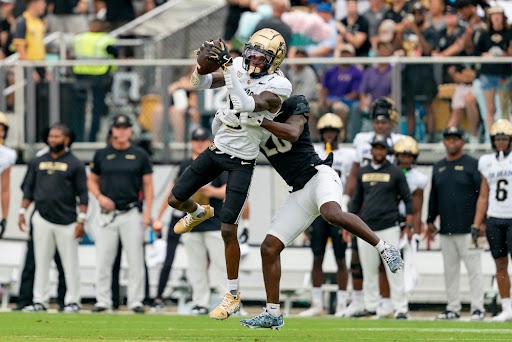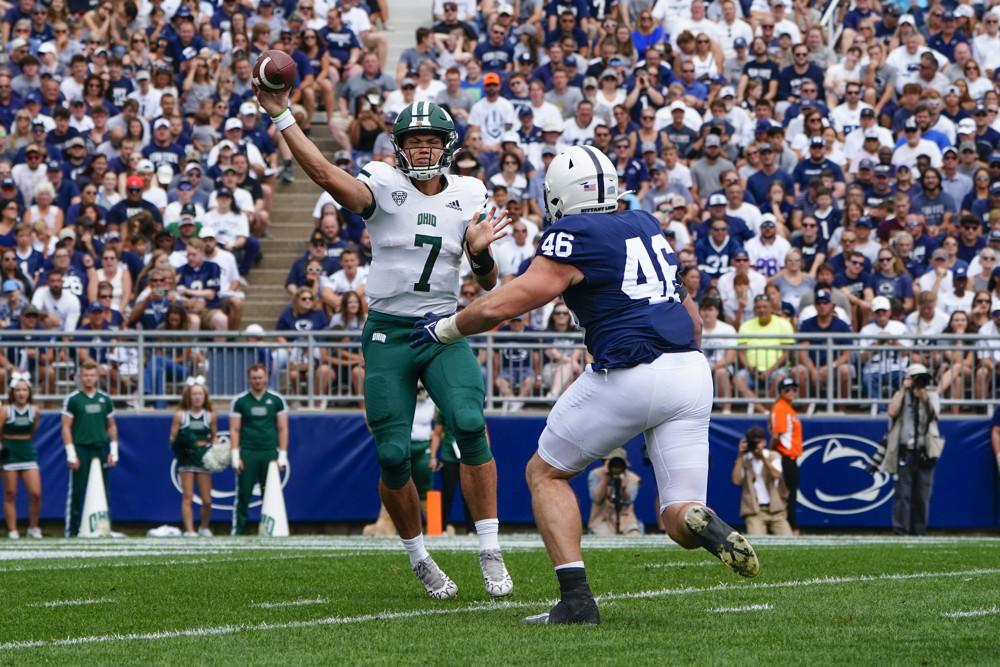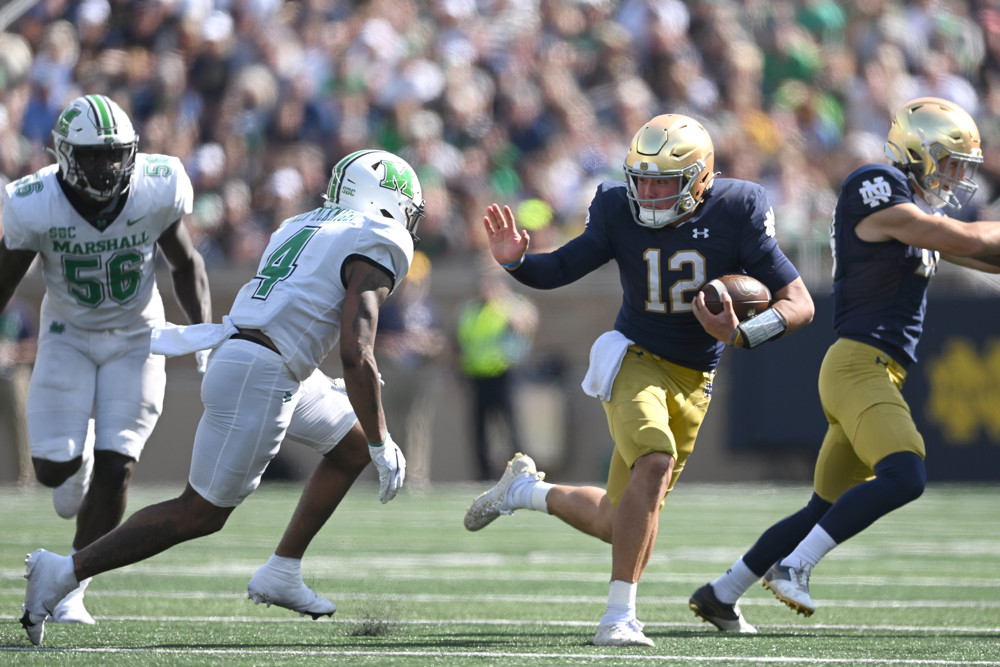After a 3-9 season, Nebraska head coach Scott Frost fired all but one offensive coach and hired Mark Whipple to take the reins. Last year with Pittsburgh, Whipple’s offense scored the 3rd-most points and gained the 7th-most yards per game among all FBS teams. With Frost relinquishing full control of the offense, Whipple will remake the unit in his image.
But how much will Whipple need to change? Nebraska ranked 71st in points per game in the FBS this past season but ranked 5th in Points Earned per passing play, better than Pittsburgh. Despite ranking worse than Whipple’s former team in Points Earned per rushing play (45th), Nebraska hit its designed gap more often, got stuffed less often, and averaged more yards per attempt than Pitt.
But the team returning to Lincoln does not resemble last year’s. Gone is senior quarterback Adrian Martinez, who is replaced by Casey Thompson. Nebraska loses its two leading receivers, including 6’9″ tight end Austin Allen. The offensive line returns three starters but loses its best in center Cam Jurgens.
The talent still at Nebraska does not inspire much confidence. The offensive line performed horribly last season, blowing 4.2% of its pass blocks, the 3rd-highest rate in the FBS. Its blocking was 89th in Points Above Average per play, mostly due to its (lack of) pass protection.
Thompson placed in the the top third for quarterbacks in Point Earned per play, On-Target percentage and IQR (minimum 100 pass attempts) but had an interception rate of 3.4%. His frequent mistakes and inadequate coverage identification led him to transfer away from competition for his job at Texas.
Whipple will need to adjust his pass-heavy scheme to his current players’ abilities. Nebraska ran the ball over 40% more often than it passed in 2021, despite usually playing from behind. Whipple can continue to forego the huddle, as the Huskers have done so since Frost’s tenure began.
As Nebraska’s offense ran mostly out of 11 personnel the past few seasons, Whipple would be shaking things up quite a bit if he decided to change packages as much as he did at Pitt.
The Huskers based their run game on Inside Zone, complemented by Outside Zone and Counter. Expect Whipple to recycle the blocking from these plays in 2022 but pitch the option element. Despite Pickett’s deceptive speed, the Panthers rarely called a run where Pickett read a defender. The Counter and Triple options Nebraska showed in 2021 (video below) will not reappear.
The Huskers, though based on Zone, also ran Power, Dart, Trap, Tug, G, among others. Whipple may add a gap-based outside run (video below) and call the occasional Jet Sweep to threaten the outside. Most likely he will only keep Power to simplify the offense and focus on the pass. With fewer plays to execute, the offensive line may make fewer mistakes than last year, such as opening the 2021 Oklahoma game with back-to-back false starts.
With fewer runs should come a deeper passing game. The Huskers’ passing scheme reflected a reliance on the run, utilizing play action to fool the defense and simple concepts for the receivers. Hitches, flats and seams comprised much of the playbook, with a few other concepts (such as mesh) completing the offense. Whipple will expand the deep game, with concepts such as Mills (video below) to stress the safeties.
Whipple will create the most opportunities through his use of formations. Come Week 0, notice the way he positions the Huskers’ players to rearrange the Northwestern defense. By forcing Northwestern to align certain ways, he can run his plays against inferior defensive positioning. Michigan State did so last season, exposing the Wildcats’ 4-3 alignment weaknesses and scoring 38 points in a game that was never in doubt.
With 11:08 left in the first quarter the Spartans show one tight end and receiver to the boundary and twins to the field (video below). To cover the extra space and twin receivers, the Wildcats shift their linebackers to the field.
With no man in the D gap and the safety playing eight yards off the ball, Michigan State has the opportunity to hit the gap with the run, as it does unsuccessfully, or attack through the air with a two-on-two matchup to the boundary. Despite the short gain, few defenses can hold strong with such holes in their alignment.
When Michigan State aligns in Quads at the midway point in the third quarter (video below), the outside linebackers evacuate the box to focus on the pass, leaving five to defend the run. But the linebackers also can only help cover receivers in their path, as the Wildcats play match quarters coverage here.
Playcaller Jay Johnson dials up Shakes, or Corner Strike (for the Madden players), leaving the corner and safety as the only relevant pass defenders. Jayden Reed runs the crack corner with outside leverage against the safety and catches a 23-yard toss from Payton Thorne.
Whipple can formation his players like the Spartans did and base out of the 11 personnel familiar to Nebraska. To exploit the middle of the field left open by Northwestern’s quarters coverage he may call Mills, or attack the outside with Shakes or Smash, the boundary option in the Mills video. As the season progresses he will incorporate more packages and install more of his plays to gradually change the offense to his liking.
Whipple will be limited in how much of this he can do. He will not have the talent or depth he had at Pitt, nor the three years of player experience with his playbook.
With what he has, expect Whipple to vary up the personnel packages, limit the runs both in quantity and complexity, and air the ball out as much as he can. With a capable quarterback and a reversal in last year’s luck, the Cornhuskers may show enough life to save the coaching staff.



